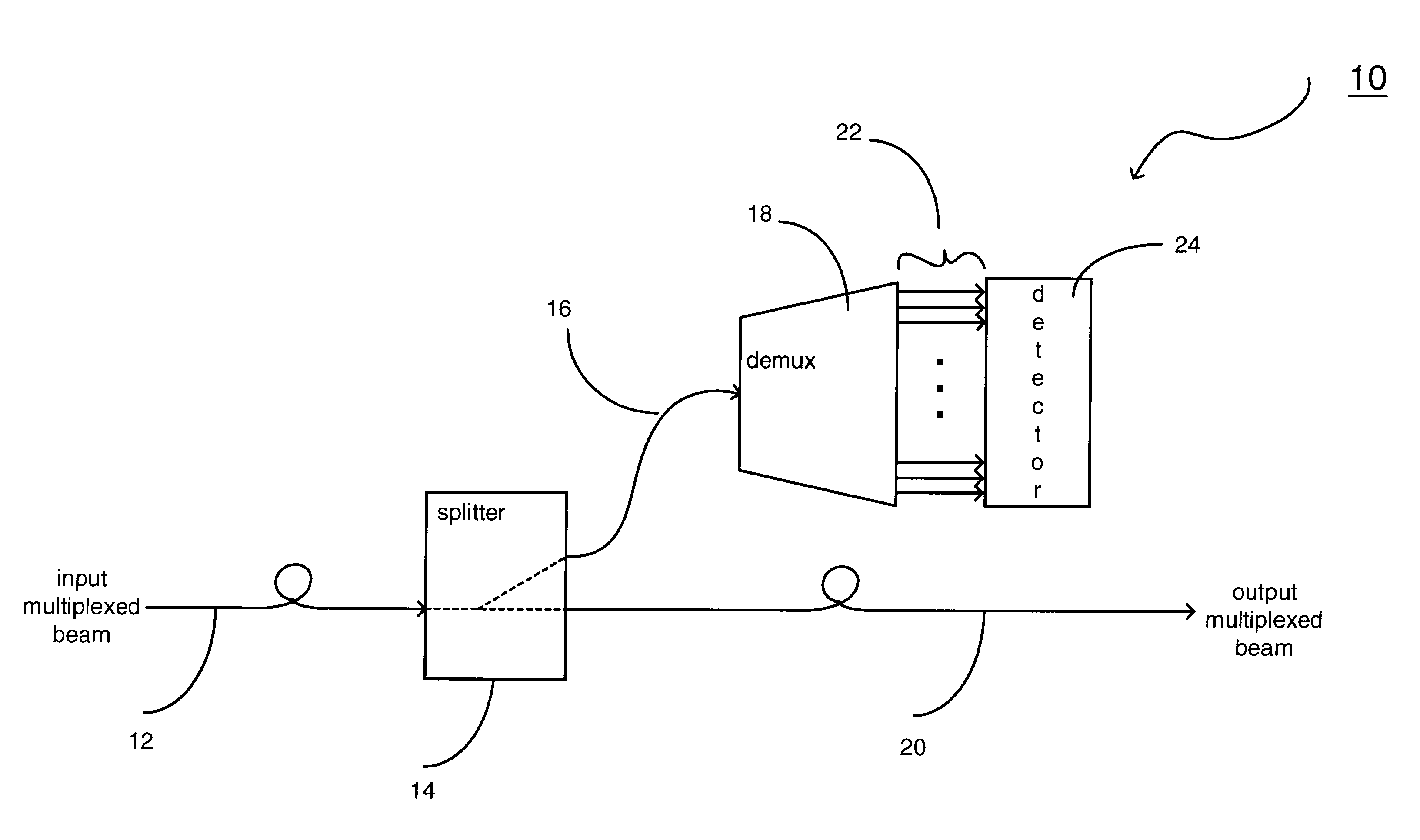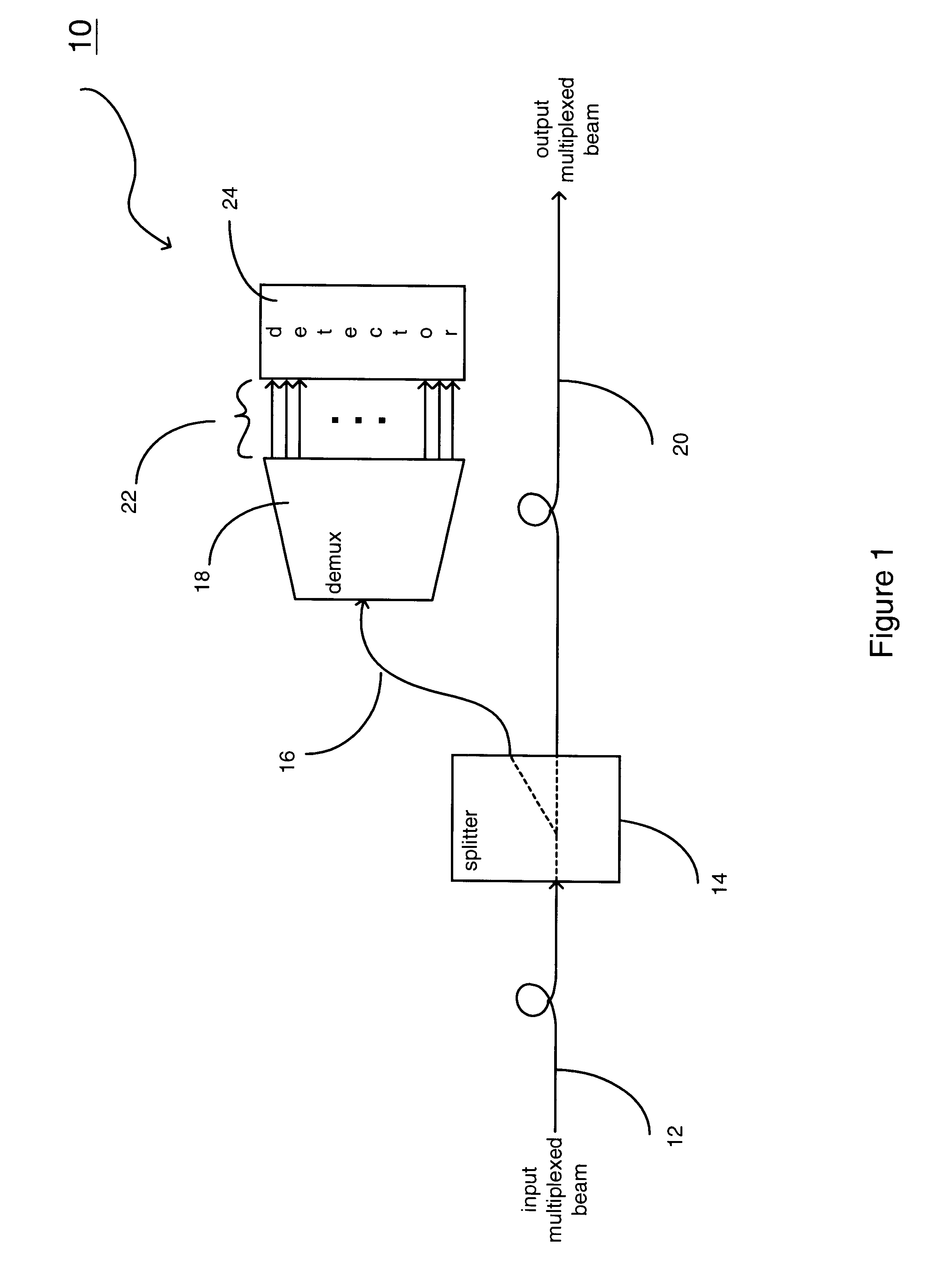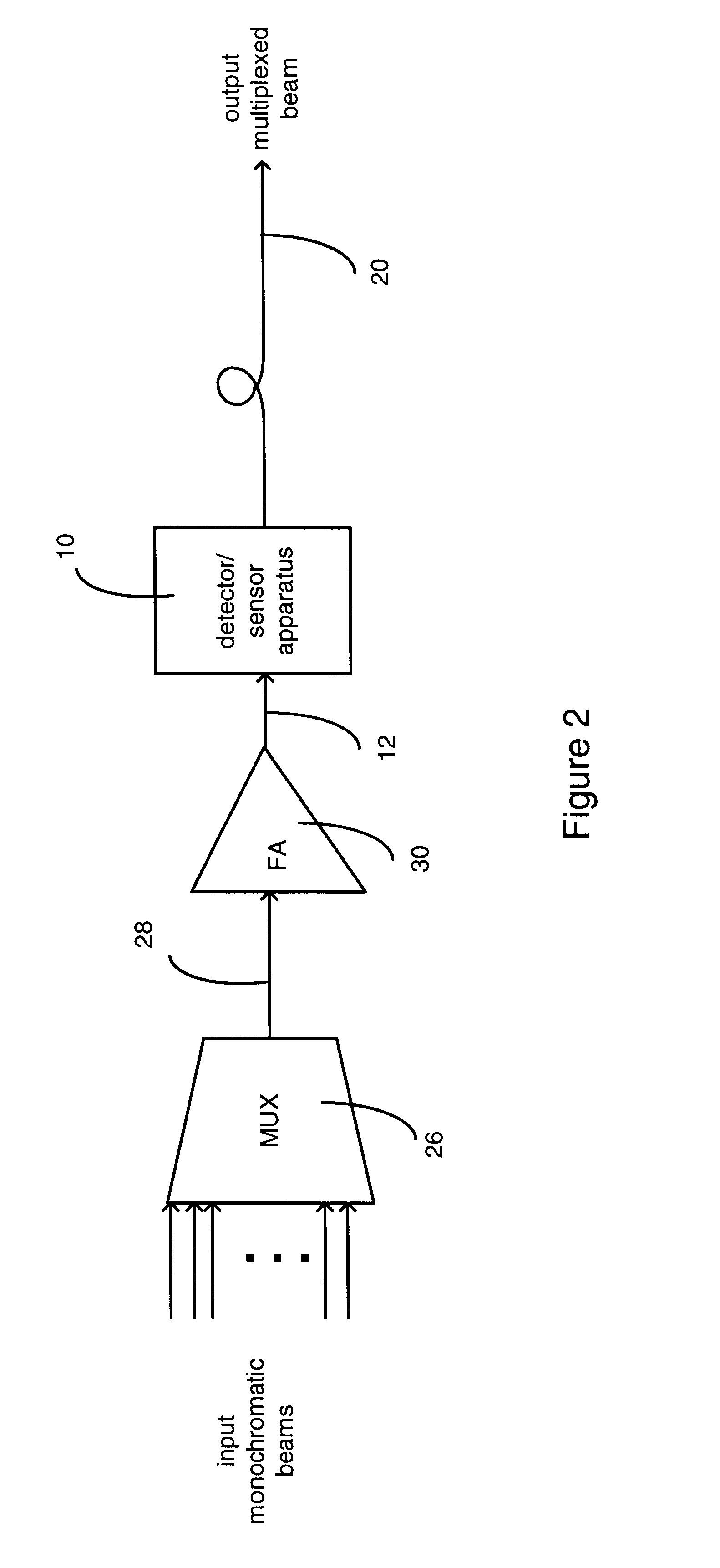Technique for detecting the status of WDM optical signals
- Summary
- Abstract
- Description
- Claims
- Application Information
AI Technical Summary
Benefits of technology
Problems solved by technology
Method used
Image
Examples
Embodiment Construction
Referring to FIG. 1, there is shown schematic diagram of an apparatus 10 for detecting the status of wavelength division multiplexed optical signals in accordance with the present invention. The apparatus 10 comprises an input fiber 12 for communicating an original, multiplexed, optical input beam to a splitter 14. The original, multiplexed, polychromatic optical input beam being communicated over the input fiber 12 comprises a plurality of optical signal channels (e.g., 33 optical signal channels) for carrying a respective plurality of optical signals (e.g., 33 optical signals) at a respective plurality of unique center wavelengths, which are preferably, but not required to be, within the infrared (IR) region of the electromagnetic spectrum. The plurality of optical signals that are being carried by the respective plurality of optical signal channels in the original, multiplexed, polychromatic optical input beam are multiplexed together after first being superimposed on each corres...
PUM
 Login to View More
Login to View More Abstract
Description
Claims
Application Information
 Login to View More
Login to View More - R&D Engineer
- R&D Manager
- IP Professional
- Industry Leading Data Capabilities
- Powerful AI technology
- Patent DNA Extraction
Browse by: Latest US Patents, China's latest patents, Technical Efficacy Thesaurus, Application Domain, Technology Topic, Popular Technical Reports.
© 2024 PatSnap. All rights reserved.Legal|Privacy policy|Modern Slavery Act Transparency Statement|Sitemap|About US| Contact US: help@patsnap.com










